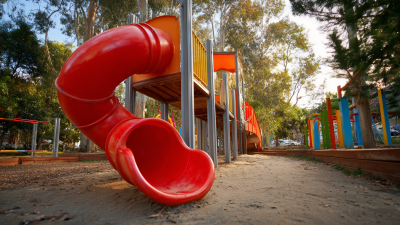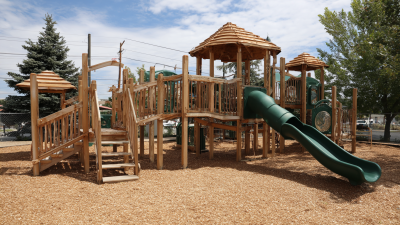 +86-13901441113
+86-13901441113




As families increasingly recognize the importance of outdoor play for children's physical and cognitive development, the market for Outdoor Play Sets has seen significant growth. According to a 2021 report by Market Research Future, the global outdoor play equipment market is projected to reach USD 7.92 billion by 2025, reflecting an annual growth rate of 4.8%. This surge highlights a rising demand for safe, durable, and engaging play structures. However, selecting the right Outdoor Play Set can be overwhelming given the myriad options available, each varying in materials, sizes, and features.
Safety remains a paramount concern, as the U.S. Consumer Product Safety Commission reported over 200,000 emergency room visits annually due to injuries associated with playground equipment. Therefore, understanding key factors—from space and age appropriateness to material safety and industry certifications— is essential for making an informed decision that ensures joyful and risk-free playtime for children.

When selecting an outdoor play set for children, understanding safety standards is paramount. Safety standards are established to ensure that play equipment is designed and constructed with child safety in mind. These regulations often cover aspects such as material quality, structural integrity, and age-appropriate design. Familiarizing oneself with these standards can prevent accidents and injuries, allowing children to engage in playtime without unnecessary risks.
In addition to compliance with safety standards, parents should consider the importance of regular maintenance and periodic inspections of outdoor play sets. Deterioration over time can lead to hidden hazards such as rust, splinters, or instability. By ensuring that the play set meets all safety requirements and is well-maintained, caregivers can create a secure environment that promotes active play and social interaction, ultimately fostering a child's physical and emotional development.

When choosing the right outdoor play set, material durability and weather resistance play crucial roles in ensuring longevity and safe playtime for children. The primary materials used in play sets include wood, metal, and plastic, each with its own advantages and disadvantages.

When opting for wood, it’s essential to select types that are naturally resistant to weather elements, such as cedar or redwood. Additionally, look for pressure-treated woods that have undergone a treatment process to withstand moisture, insects, and decay.
Metal play sets often boast excellent durability but require a protective coating to prevent rust and corrosion, especially in areas with high humidity or rainfall. Look for galvanized steel or powder-coated finishes that offer enhanced protection against the elements. On the other hand, plastic sets are lightweight, easy to assemble, and resistant to fading and cracking. However, ensure they are made from high-density polyethylene or UV-stabilized materials that can withstand harsh sunlight without deteriorating over time.
Selecting the right materials not only enhances safety but also reduces the need for frequent replacements, ultimately providing long-lasting enjoyment for children.
When selecting the right outdoor play set, understanding age appropriateness and developmental benefits plays a crucial role in ensuring safety and promoting healthy growth among children. According to a report by the American Academy of Pediatrics, play is essential for children's cognitive, social, and emotional development. Children aged 2-5, for instance, require equipment that supports gross motor skills, such as climbing and balancing. Play sets designed for this age group should feature lower platforms and softer materials to prevent injuries.
Moreover, as children grow older, their play needs evolve. The International Playground Equipment Manufacturers Association (IPEMA) emphasizes the importance of incorporating challenges in play equipment for older children, ages 6-12. Elements such as fort-like structures that encourage imaginative play and more complex climbing features support the development of problem-solving skills and cooperation among peers. In particular, research shows that outdoor play can enhance physical fitness, with 70% of children benefiting from active engagement in structured play environments. Thus, choosing the right outdoor play set means considering both age-appropriate designs and the developmental milestones they support.
| Play Set Type | Age Group | Key Features | Developmental Benefits | Safety Considerations |
|---|---|---|---|---|
| Swing Set | 2-12 years | Multiple swings, climbing elements | Gross motor skills, social interaction | Stable ground installation, no sharp edges |
| Climbing Frame | 3-10 years | Ropes, nets, slides | Balance, coordination, strength | Secure anchoring, soft landing areas |
| Playhouse | 2-8 years | Windows, doors, creative space | Imaginative play, language skills | Non-toxic materials, sturdy design |
| Sandbox | 1-6 years | Covered area, digging tools | Fine motor skills, sensory development | Proper drainage, clean sand |
| Swing and Slide Combo | 2-8 years | Slide, dual swings | Physical activity, turn-taking | Height restrictions, safety harnesses |
When selecting the right outdoor play set, understanding space requirements is crucial. First, measure the area in your yard where you plan to install the play set. Ensure there is ample space not only for the equipment itself but also for safe play around it. A minimum clear zone of six feet around the structure is recommended to prevent accidents. Consider any nearby obstacles, such as trees, fences, or landscaping features that might restrict movement or pose safety risks.
Installation considerations go hand in hand with space requirements. The ground surface matters significantly; level ground is ideal to ensure stability and safety. If the area is uneven, additional groundwork may be necessary. Moreover, think about the accessibility and convenience of installation. Some play sets arrive partially assembled, but others might require professional setup. Additionally, take note of any regulations or homeowner association guidelines regarding yard installations, as they may dictate the allowable space and safety measures that need to be taken.
When considering the purchase of an outdoor play set, effective budgeting strategies are essential to ensure that you get the best value for your investment while meeting safety standards. Start by determining a realistic budget that aligns with your family's needs and consider potential long-term use. Look for play sets that offer comprehensive features without excessive costs, as some brands may provide similar quality at a lower price.
Tips: Research different brands and models, and don’t hesitate to seek out reviews from other parents. This can help identify which sets are both safe and budget-friendly. Additionally, consider purchasing during off-peak seasons or during sales events to take advantage of discounts.
Cost-effectiveness also hinges on the longevity of the play set. Investing in higher-quality materials can reduce the need for frequent replacements. Look for sets that include warranties indicating durability and safety standards.
Tips: Opt for modular designs that allow for expansion or upgrades as your children grow. This not only maximizes play value but also spreads out costs over time, making a once hefty price tag more manageable.





